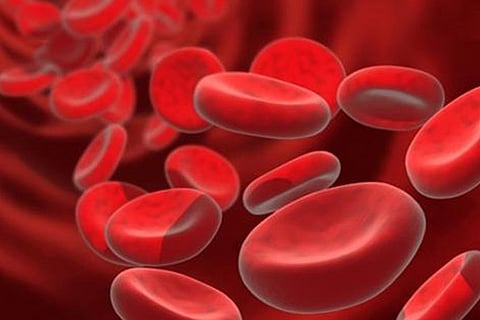

New Delhi
Healthcare experts have stressed on the need to intensify efforts to address all causes of anaemia for accelerating decline in its prevalence among all age groups in a mission mode.
According to the Comprehensive National Nutrition Survey, approximately half of the women of the reproductive age group are anaemic and 41 per cent of preschoolers, 24 per cent of school-age children and 28 per cent of adolescents are reported to be anaemic.
The government's Anemia Mukt Bharat programme has been designed to decrease anaemia by three percentage points per year among children, adolescents and reproductive-age women between 2018 and 2022.
Iron folic acid tablets and de-worming are its main measures. Drawing attention to the impact of anaemia on the health of children and women, the experts said that there is a need for intensifying efforts to address all causes of anaemia for accelerating decline in anaemia prevalence among all age groups in a mission mode using a multi-pronged strategy rather than scattered programme.
Kapil Yadav, the additional professor at Centre for Community Medicine, AIIMS said severe anaemia during pregnancy significantly contributes to maternal mortality and morbidity.
"There is evidence that severe anaemia also increases perinatal morbidity and mortality by causing intrauterine growth retardation and preterm delivery. Anaemia in adolescent girls affects their physical work capacity and reproductive physiology," he said.
He noted that the two most promising interventions to aid anaemia control in the country in the current scenario are the use of parenteral (non-oral means of administration) iron for moderate to severe anaemia and food fortification.
"Parenteral use of iron overcomes the drawback of side effects and compliance and bioavailability currently faced by oral iron-folic acid. Food fortification is also one of the most sustainable solutions to the problem of micronutrient deficiency," he said.
Sheila Vir, public health nutrition expert and founder-director of Public Health Nutrition and Development Centre, said anaemia persists primarily due to newborns being born to anaemic mothers with low storage of iron which depletes rapidly after six months unless appropriate food is fed to young children from six months onwards, low intake of iron against requirements, worm infestation and malaria in endemic regions and poor water, sanitation and hygiene.
Increasing dietary diversity and enhancing the bioavailability of the dietary iron by increasing the enhancers in the diet and reducing the inhibitors, addressing poor sanitation and providing iron through medicinal supplementation can be among measures to control nutritional anaemia.
Praven Kumar, the director professor, Department of Pediatrics, Lady Hardinge Medical College, said anaemia is a serious public health problem in India which can be tackled with better implementation of different components of ''Anemia Mukt Bharat''.
"Anemia Mukt Bharat has well defined, evidence-based interventions. A lot can be achieved with better implementation of different components of AMB," Kumar said.
Visit news.dtnext.in to explore our interactive epaper!
Download the DT Next app for more exciting features!
Click here for iOS
Click here for Android